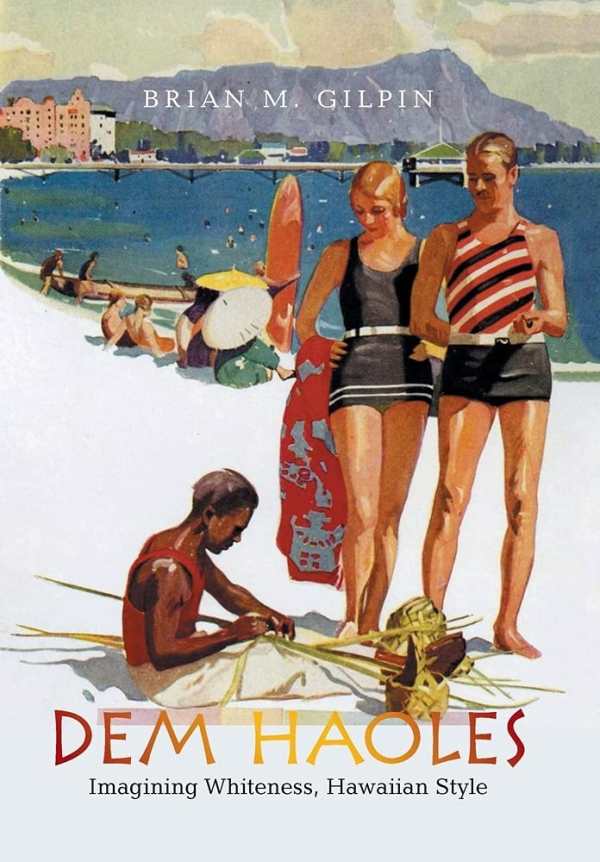Dem Haoles
Imagining Whiteness, Hawaiian Style
Dem Haoles is a social science book about the power of images to create and uphold narratives about Hawaii and its peoples.
In his social science book Dem Haoles, Brian M. Gilpin explores the purposes and implications of media depictions of white people’s places in Hawaii.
Ever since white people arrived in Hawaii, Gilpin says, they have portrayed themselves in specific ways, often to achieve specific ends. By contrasting their own “positive” qualities with the locals’ “negative” ones, the book argues, haoles (meaning “foreigners,” but often used to refer to white people) created a variety of self-aggrandizing myths that both demeaned and depended on the presence of a subservient, belligerent, or needful “other.” These images, the book asserts, persist in contemporary media and should be examined with a critical eye.
Gilpin performs close readings of popular media, including television’s Hawaii 5-0 and Jack London’s short stories, as well as niche media like surf films. The breadth of the material examined demonstrates the universality and longevity of the six main image archetypes that the book identifies based on each character’s intent, role, and impact on Hawaiian society: the god, the demigod, the seeker, the saint, the rogue, and the vagabond.
As the book asserts, some of these images were designed for the express purpose of supporting a particular agenda. For example, by depicting Captain James Cook as a benevolent god who died trying to help the “barbaric” Hawaiians, Britain justified their colonization of the islands and the subjugation of the islanders. Other images fall into harmful tropes by accident. Either way, as the book demonstrates with specific and detailed examples, these archetypes depend on erasing or belittling the locals whom haoles usually claimed to want to “help.” At best, locals get to support a medium’s haole hero in their journey; at worst, they either do not exist at all, or are stubborn outsiders who must die for their refusal to accept Western ways.
Though inspired by events in Gilpin’s life, the book often cites news reports and primary sources, adding legitimacy and historical context to its conclusions. A closing look at recent attempts to push back against traditional haole images, and the tenacity with which those images cling to power, offers a potential “preview” of how future media may depict Hawaii.
The book’s density makes it perfect for serious scholars seeking thoughtful analysis of portrayals of Hawaiians in media. The language, while often high level, is plain enough to make the book accessible to anyone curious about the subject matter.
Dem Haoles is a social science book about the power of images to create and uphold narratives about Hawaii and its peoples.
Reviewed by
Eileen Gonzalez
Disclosure: This article is not an endorsement, but a review. The publisher of this book provided free copies of the book and paid a small fee to have their book reviewed by a professional reviewer. Foreword Reviews and Clarion Reviews make no guarantee that the publisher will receive a positive review. Foreword Magazine, Inc. is disclosing this in accordance with the Federal Trade Commission’s 16 CFR, Part 255.

